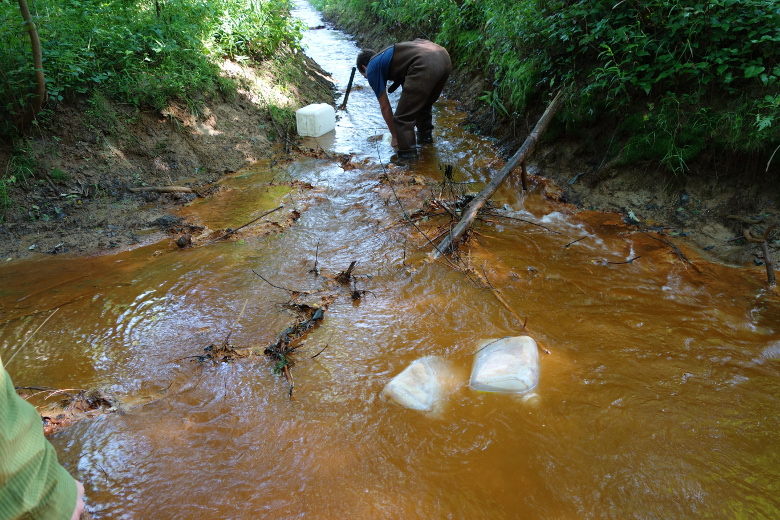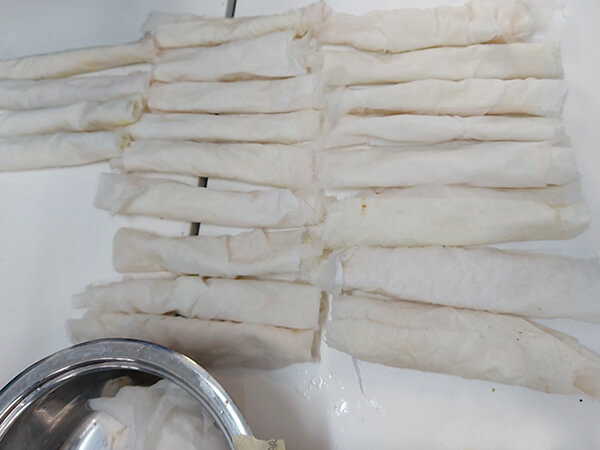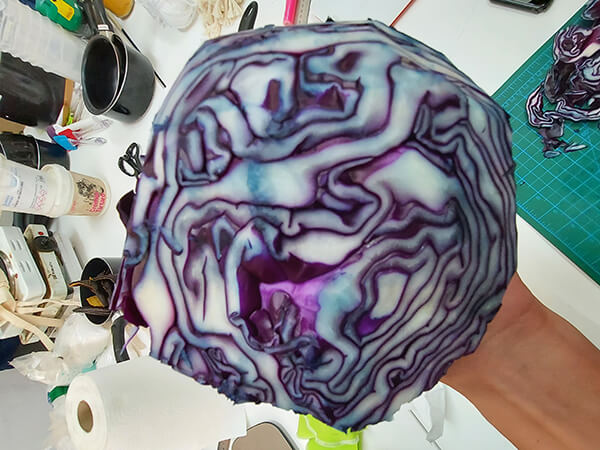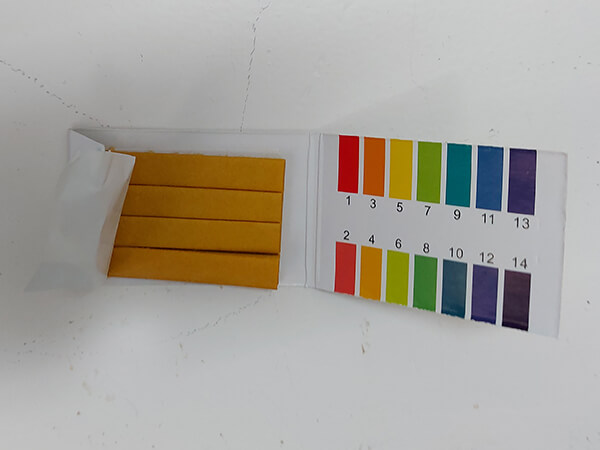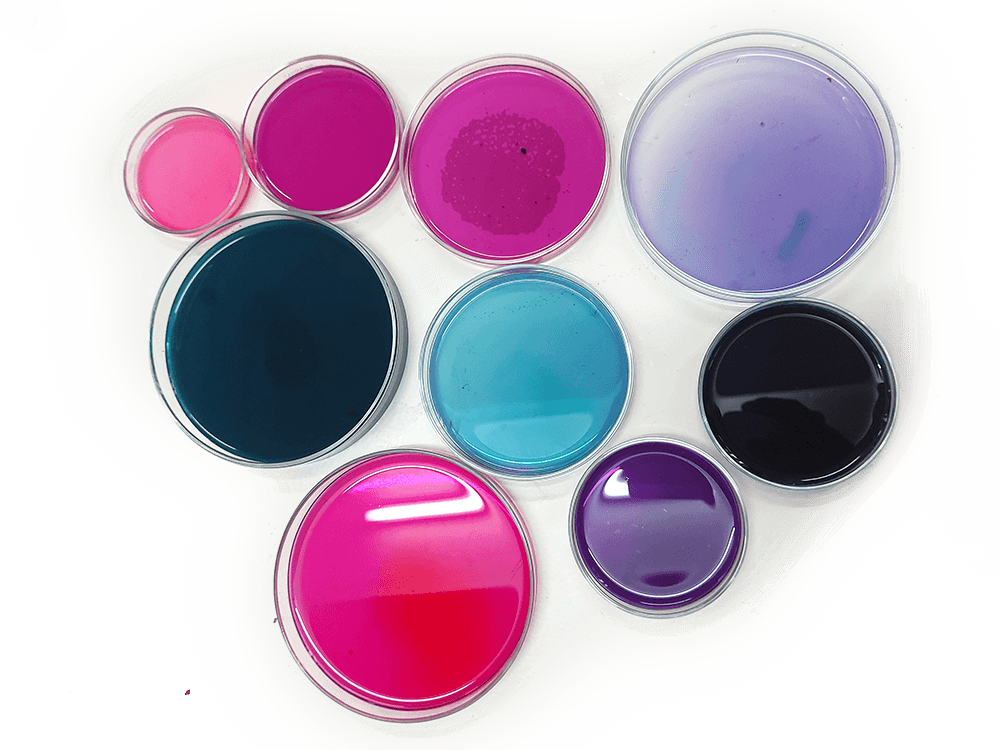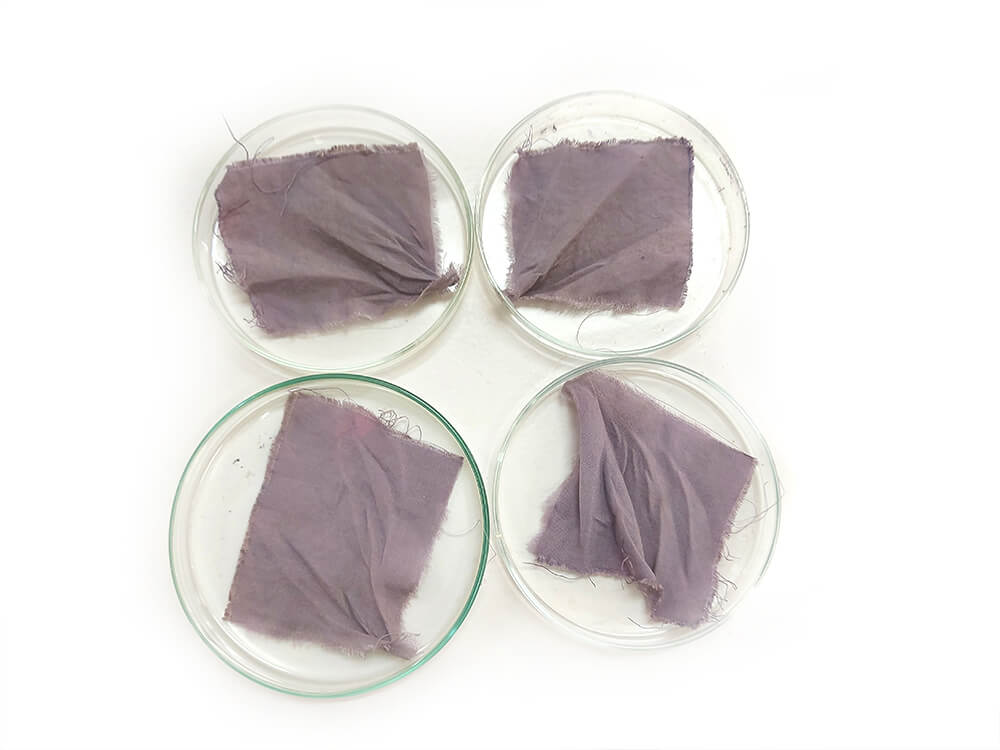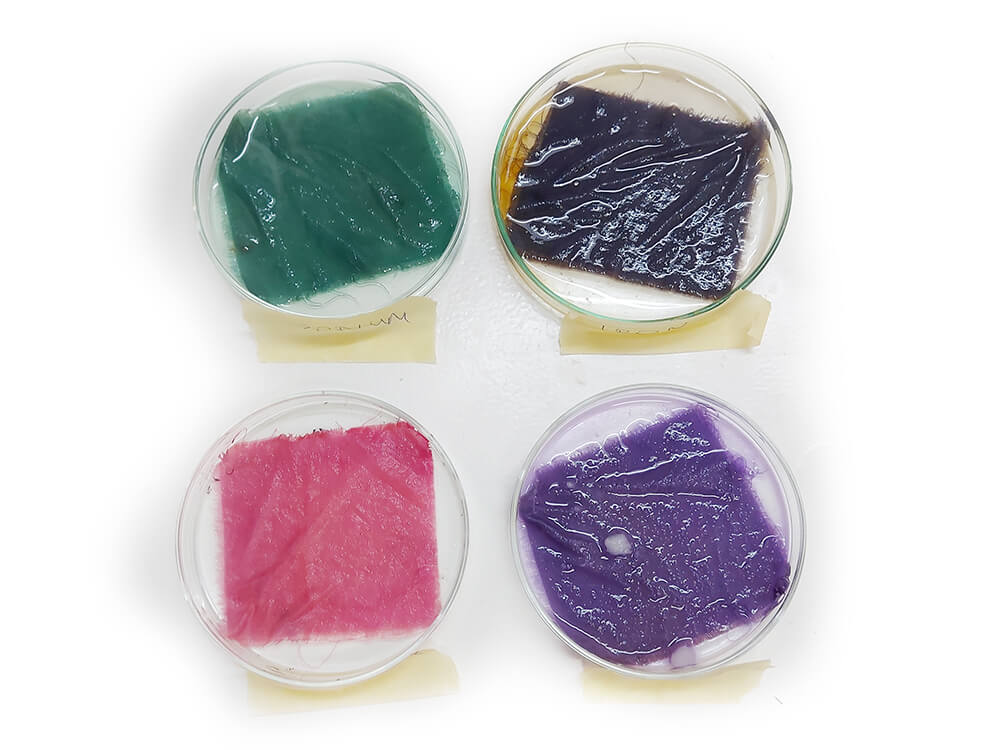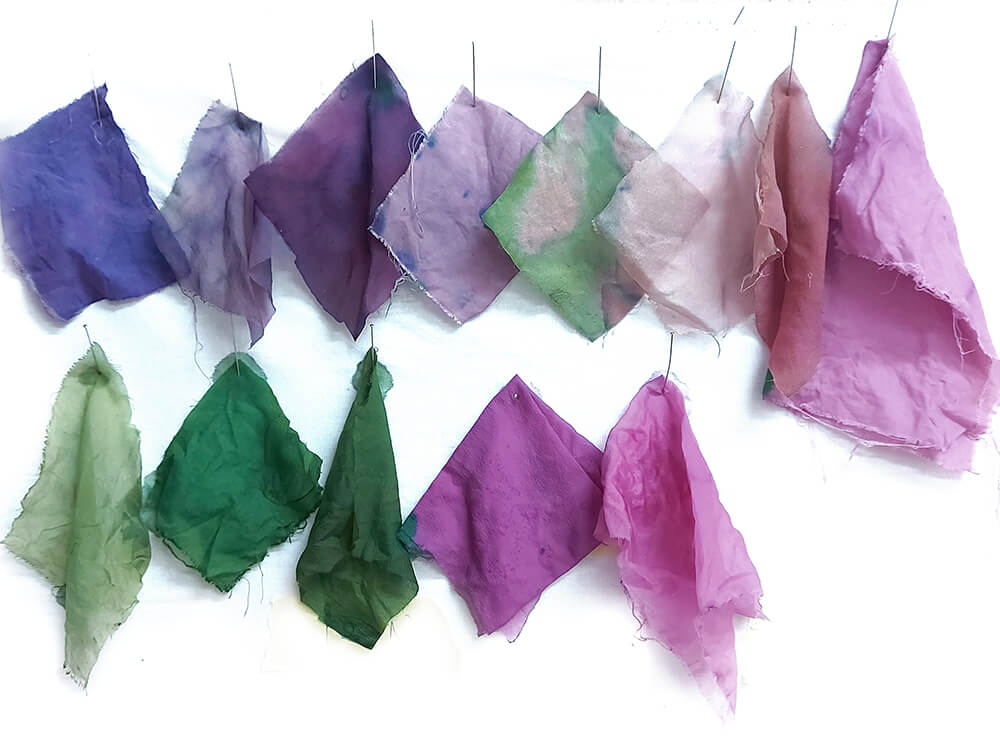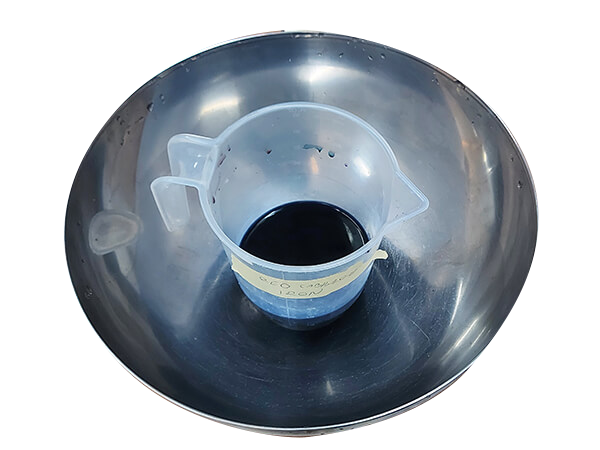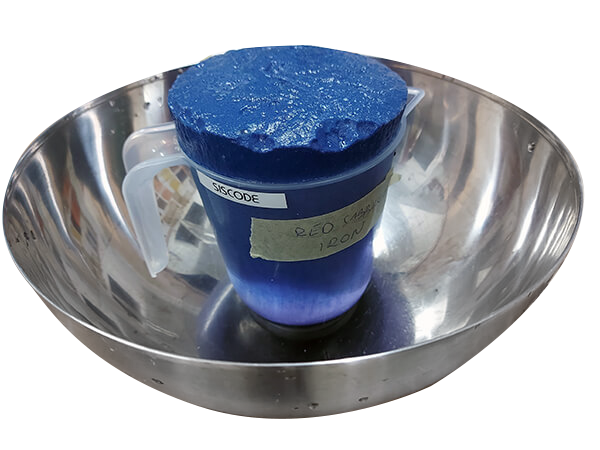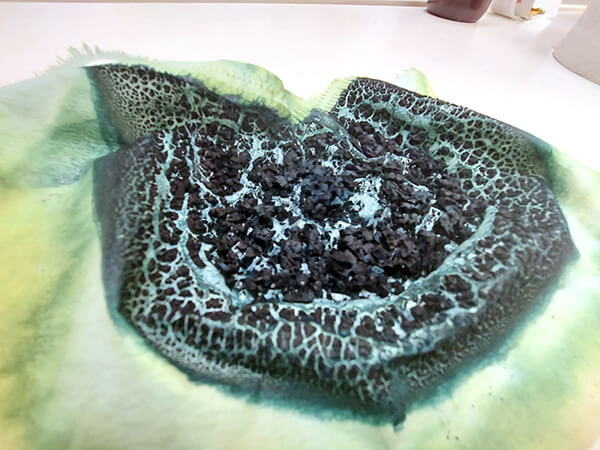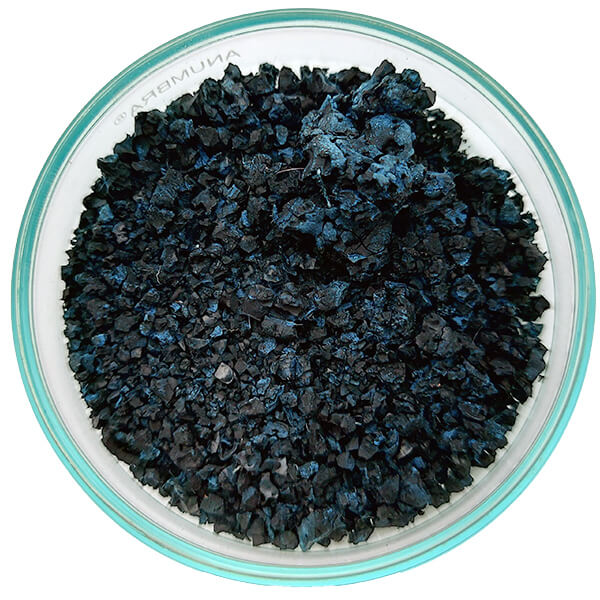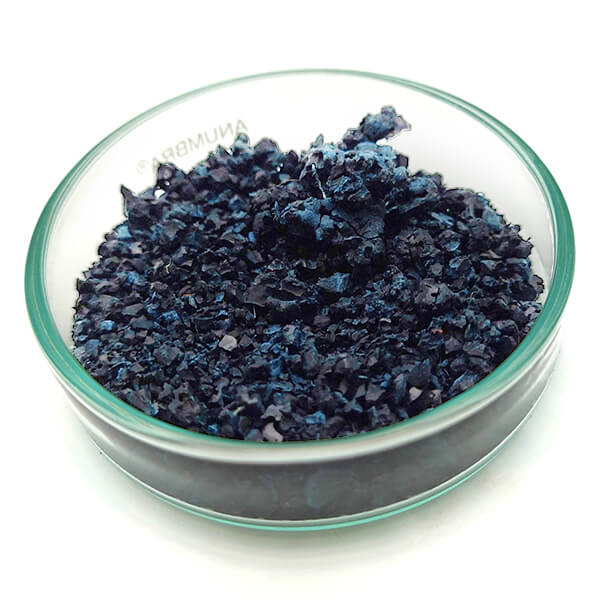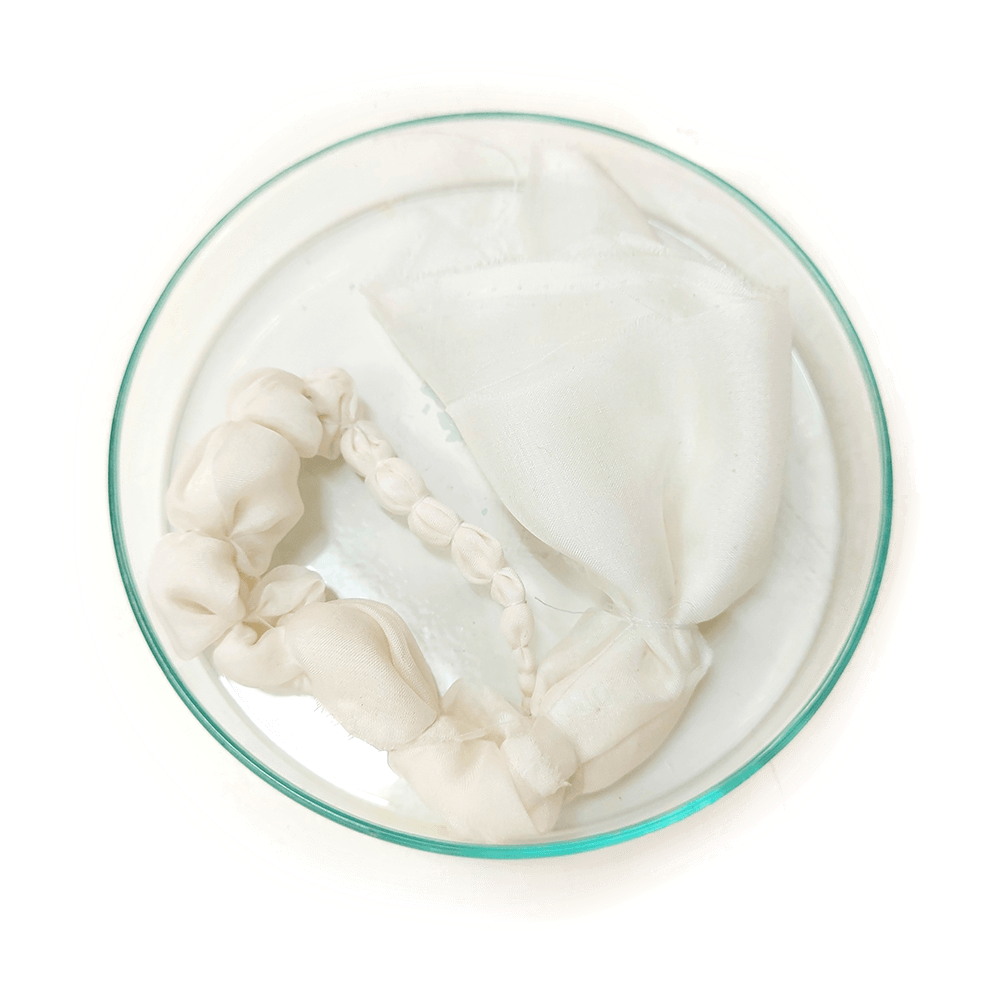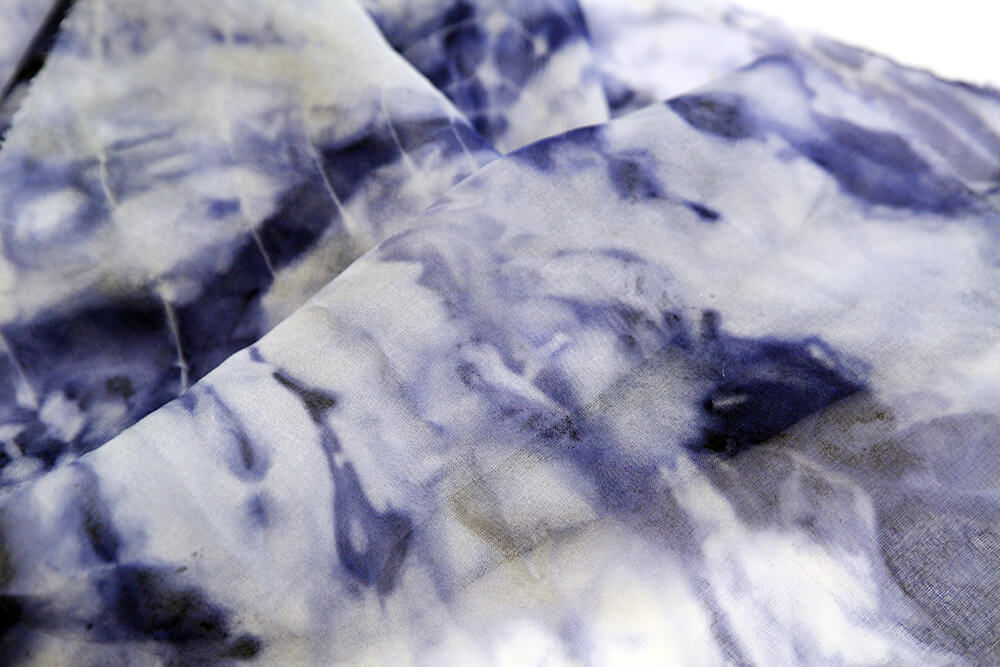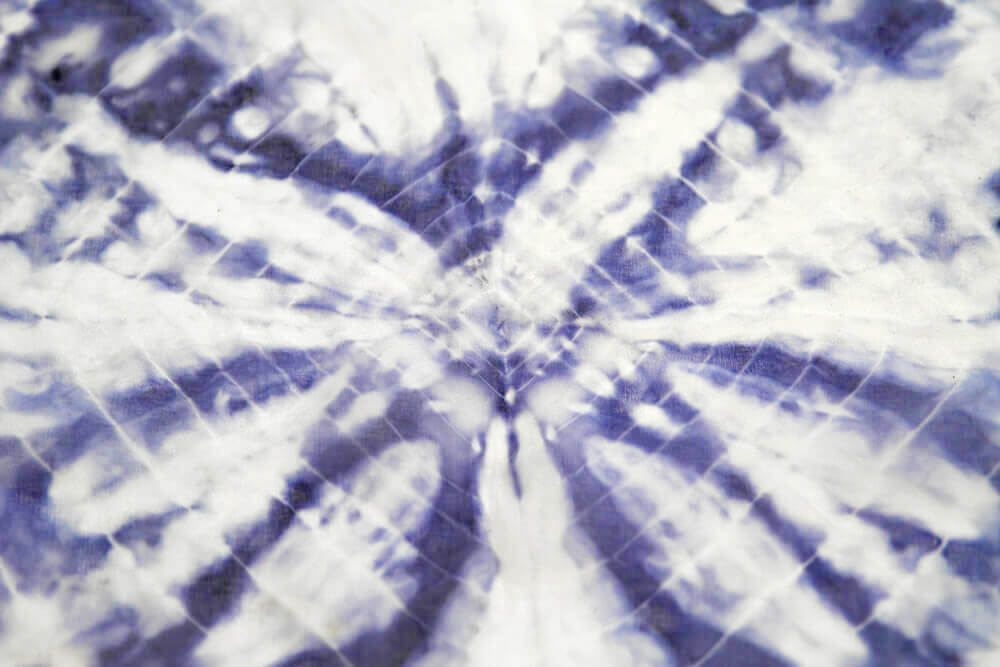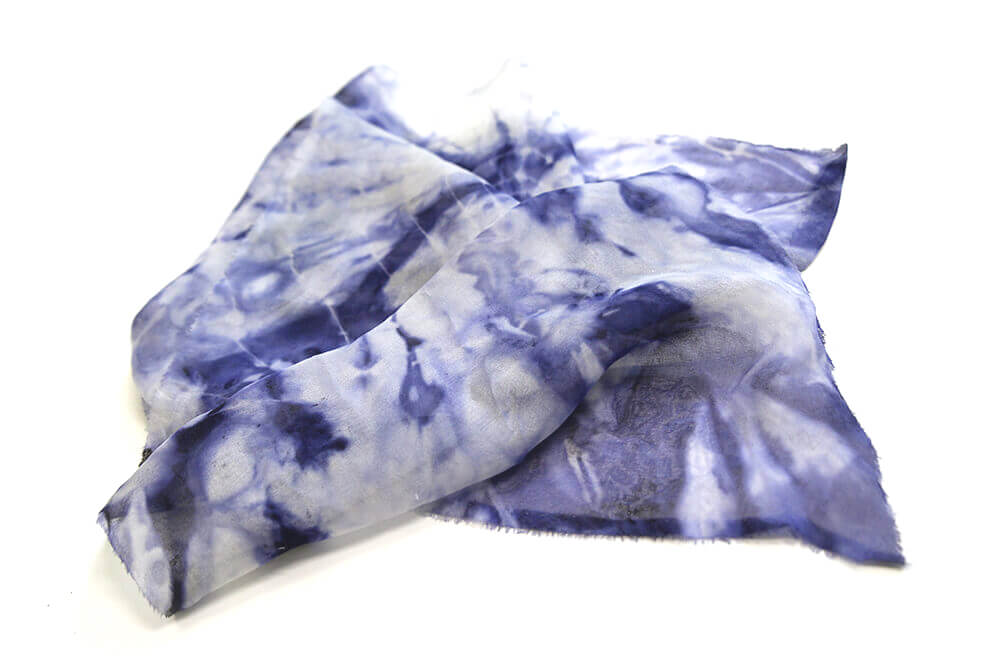Biochromes
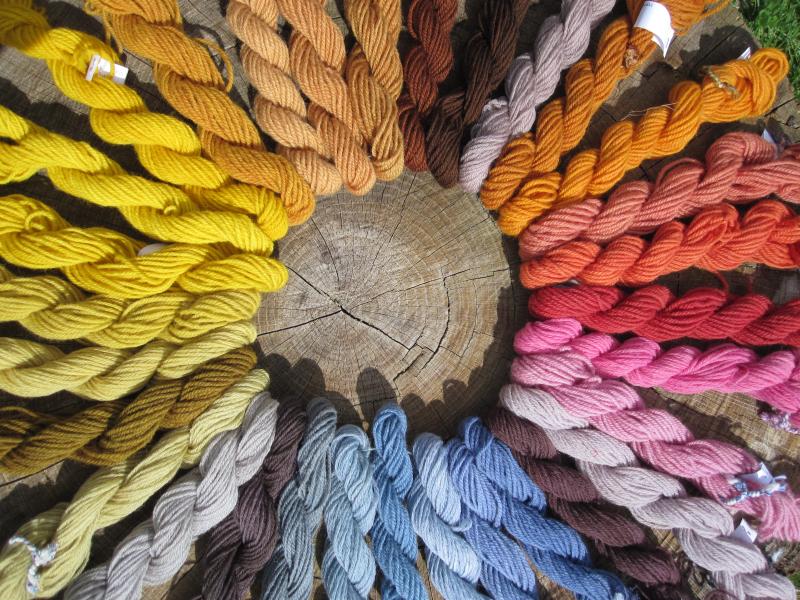

Geologist Karen Vaughan collects various soils and dirt to produce pigments for watercolors
How Natural Pigments and Dyes Have Been Used in Art
I based my research this week on this tutorial: Natural Dyeing with Red Cabbage
Natural dyeing only works with natural fibers: cotton, flax, hemp, jute, linen, bamboo, angora, mohair, cashmere, alpaca and also silk from insects, any animal or vegetable fiber. For this tutorial I will use silk (animal protein), cotton (plant fiber) and viskose/rayon (tree based fiber). Weight the dry fabrics you want to dye - this way you'll obtain the WOF - weight of fabric parameter, that will define the amount of substances necessary to perform next steps. For easier future use, I will note substances amounts realtive to WOF rather than exact numbers.
Scouring means cleaning fibers prior to mordanting and dyeing, and does not refer to washing fabrics in a washing machine. If the fiber is not clean, the mordant and dyes will not adhere well to the fiber.Scouring removes any residue from production and removes the coating some manufacturers add to their fabrics to ease the transport process
Ingredients:sodium carbonate (2% WOF),
- put your textiles in a metal pot and pour water (just enough to cover teh fabrics)
- weight necessary amount of sodium carbonate and add to the pot
- simmer for 1 hour (do not boil)
- strain and rinse your fabric
To make sure the colors we obtain from our dyestuff do not run off once we wash our fibers, we need a mordant. The word mordant means “to bite” and that is literally what the mordant’s purpose is. A mordant is generally a natural chemical (such as aluminium which we will be using in this tutorial) that adheres to the fabric in a molecular level with the goal of preparing the fiber molecules to adhere to the molecules of the dyestuff better. This step is essential if you want your color to last and not fade away when washed after the dyeing process. This is what makes your color last for a long time, we call it color-fast.
Tools: stove, metal pot, stirring spoon, digital weight, mesh strainer, latex gloves
Ingredients: water, alluminium stone or powder (12% WOF), copper, iron sulphate (1% WOF)
- boil enough water to cover your fibers in a metal pot
- introduce aluminium
- mix thoroughly until dissolved. /li>
- wet your fibers
- introduce your fibers to the hot pot and simmer for 1 hour.
- move the fabric requently to avoid uneven color
- strain and rinse your fabric
Red cabbage (Brassica oleracea) is an edible vegetable that contains antocyanin pigment. This particular pigment is fugitive (not color-fast), which means, that the fabrics dyed with it will not maintain color permanently. It will eventually wash off or fade in the sunlight. The pigment is also highly ph-sensitive and fabrics may change color when exposed to acidic or alkaline environment or substances. It may be used to produce DIY litmus paper strips to detect the ph level of substances.
Here is an excellent tutorial on DIY litmus paper straps from Loes Bogers
Tools:, metal pot, stirring spoon, digital weight, mesh strainer, latex gloves, knife,
cutting board, beaker
Ingredients: red cabbage (1:1 WOF), water, kitchen salt,
- weight the cabbage, you will need around 1:1 ratio of cabbage to weight of fabric
- chop the cabbage into medium pieces
- place in a metal pot
- add kitchen salt as an intensifier (1-3 tablespoons/500g)
- add water, just enough to cover the cabbage
- simmer for 2 hours (do not boil, it may damage the pigment)
- strain the fabric, pour the liquid in a beaker
- rinse the fabric with cold water
Tools: stove, metal pot, stirring spoon, digital weight, mesh strainer, latex gloves,
knife, cutting board, beaker
Ingredients: red cabbage, water, kitchen salt,
- pour the liquid dye into a metal pot
- heat up the pot on a stove
- wet the previosly scoured and/or mordanted fabrics in water and put in the pot
- simmer for 2 hours, move fabric frequently to avoid uneven color
- turn the heating off, leave the bath for next 24 hours
- strain the cabbage, pour the liquid in a beaker
Tools: stove, metal pot, stirring spoon, digital weight, mesh strainer, latex gloves,
litmus paper
Ingredients:
You can modify the already dyed fabric with various substances. As cabbage is highly
ph-sensitive, the best modification results are obtained by modification of ph levels.
- sodium alteration, alum mordanted silk
- iron alteration, alum mordanted silk
- vinegar alteration, alum mordanted silk
- alum alteration, alum mordanted silk
Pigment preparation
Tools: coffee filter, metal pot, stirring spoon, digital weight, mesh strainer, latex
gloves
Ingredients: alum (18g), water, baking soda (6g)
- Place your dyestuff in an additional bigger container to avoid potential mess
- Mix 18g of alum with 100ml of hot water. Stir it and make sure it completely dissolves. Add th solution to the leftover dye and keep stirring
- Mix 6g of baking soda with 100ml of hot water. Stir it and make sure it completely dissolves.
- Pour the baking soda solution into the dye and alum solution VERY SLOWLY. They will react rapidly, producing foam that may escape containers
- Stir the mixture thoroughly, breaking as much foam bubbles as you can
- Leave the mixture for a few hours to settle down. A layer of clear water should form on top and a layer of color below
- Place a coffee filter in a mesh strainer and pour the solution in the filter in order to filtrate the pigment from the water
- Place the filter with contents in a dehydrator for 2 hours or leave it dry naturally
- Scrub the dried pigment from the filter and powder it
Bacteria dyeing
Tool and materials: Agar medium (we used Luria), petri dishes, pressure cooker, bacteria (we used Serratia marcescens), piece of natural fabric, dissinfecting ethanol spray, burner, metal hoop tool
Useful links
- 15 Reasons Your Natural Dye Project FAILED (And Why You Should Do It Anyway
- Harvesting Color: How to Find Plants and Make Natural Dyes
- Botanical Colour at your Fingertips
- 15 Reasons Your Natural Dye Project FAILED (And Why You Should Do It Anyway
- The Organic Artist: Make Your Own Paint, Paper, Pigments, Prints and More from Nature
- Wild Color, Revised and Updated Edition: The Complete Guide to Making and Using Natural Dyes
- Natural Color: Vibrant Plant Dye Projects for Your
Books
Back


